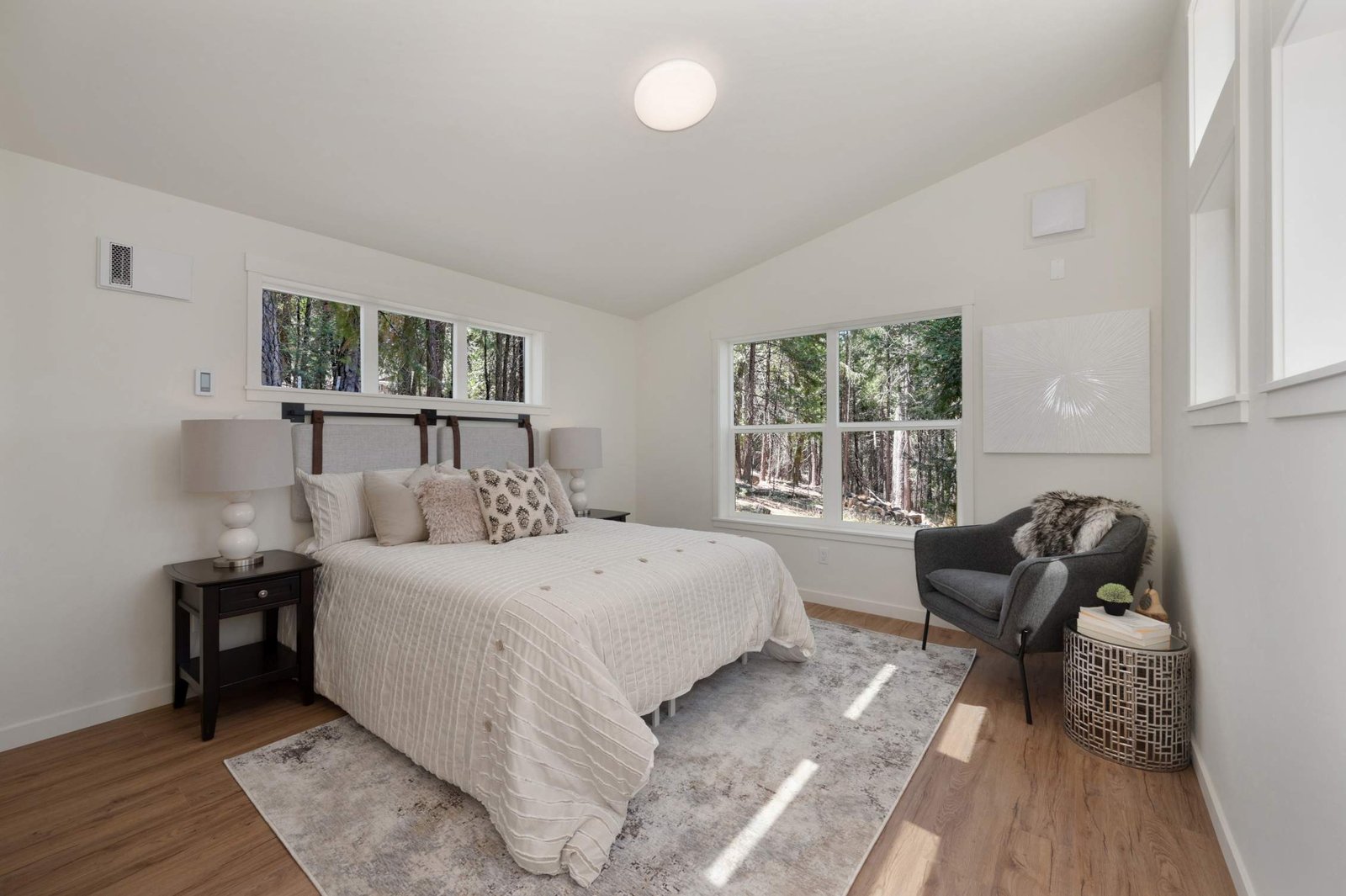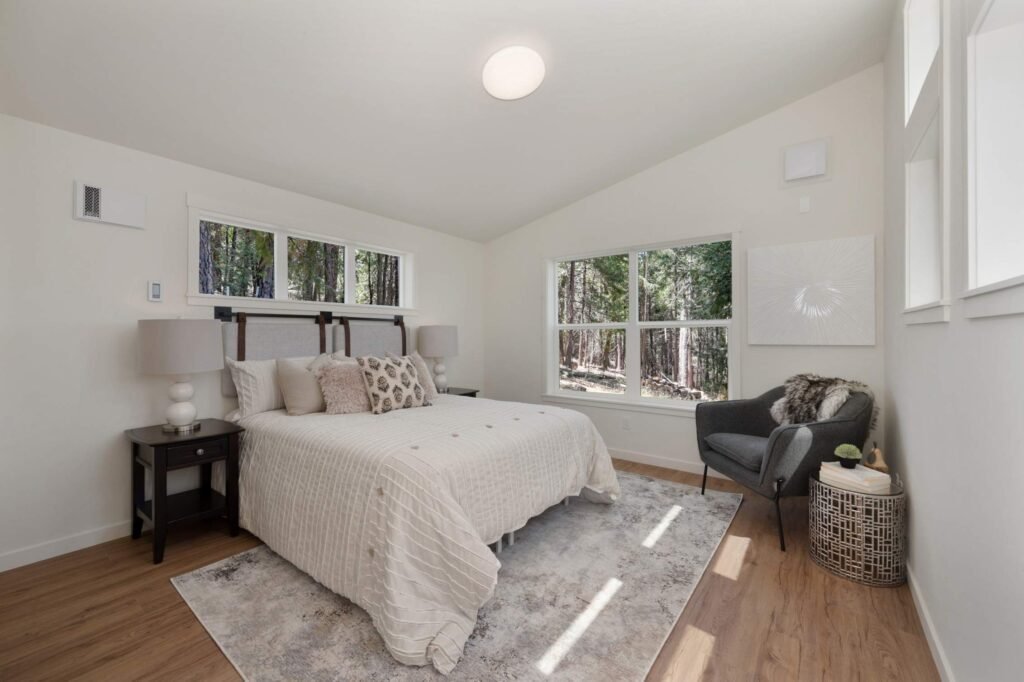Have you ever felt your living space could use some creativity, a little extra income, or maybe just a place for the family to stay? It may be time to consider Accessory Dwelling Units (ADUs)!
What in the World is an ADU?
Picture this: a cozy tiny house, apartment, or living space right in your backyard or tucked away in your basement. That, my friend, is an accessory dwelling unit (ADU). An ADU is a small, self-contained residential unit situated on the same property as a primary home. These smaller dwellings are compact, versatile, and handy. Accessory dwelling units can serve various purposes, such as housing family members or generating rental income, and they come in different types, including detached, attached, and internal units.
An ADU is a type of auxiliary building – learn more here!

Accessory dwelling units go by many names – granny flats, in-law units, backyard cottages, or even “that cool pad above the garage where Fonzie lived.” But no matter what you call them, these secondary housing units are making a big comeback.
The ADU Buffet: Pick Your Flavor
There are many ways to add an accessory or secondary dwelling unit. Let’s take a tour of the different types:
- Detached new construction ADUs: Think mini-house in your backyard. They’re perfect for when you want your guests close but not too close.
- Garage conversion ADUs: Do you have extra garage space that isn’t getting used? Turn that space into an attached apartment!
- ADUs above garages or workshops: Add a secondary unit above your garage if it has the space. Great if you don’t have room for a detached unit or if you already have a detached garage.
- Addition or “bump-out” ADUs: These work well when you have a family member who wants or needs to be a little bit closer.
- Basement conversion ADUs: Transform your unfinished basement into a cozy dwelling, like a basement apartment.
- Internal ADUs: Carve out a space within your existing home.
Why ADUs Are Coming Back

Let’s break down the benefits: Accessory dwelling units can house family members, providing flexible living space for relatives and bringing costs down for the whole family.
Show Me the Money!
- Rental housing: Rent out your accessory dwelling unit for some extra income.
- Increased property value: Your home just got a whole lot sexier to the right buyer.
Green Construction
- Reduced environmental footprint: Smaller space = smaller carbon footprint. Your backyard cottage is good for the environment.
- Efficient use of existing infrastructure: Using the same lot for additional dwellings lowers the need for new developments.
Bringing People Together
- Multigenerational living: Keep Grandma close, but not “sharing-a-bathroom” close.
- Affordable housing options: Help solve the housing crisis, one tiny unit at a time.
- Addressing local housing needs: Accessory apartments can be crucial in meeting local housing needs.
Provide additional units that comply with local regulations and support community development. Consulting local authorities ensures these units contribute effectively to addressing housing shortages.
Planning Your ADU
So, you’re sold on the ADU dream. Now what? Let’s walk through the planning process:
- Assess your property: Property owners should evaluate their property to determine whether it is suitable for an ADU. Is your yard big enough? Is your basement dry enough? Will a detached accessory dwelling unit work, or do you need to add it to the primary house?
- Zoning ordinances: Some areas won’t allow an accessory dwelling unit. Make sure yours does before diving in head first.
- Design considerations:
- Size and layout: How much space do you really need?
- Aesthetics: Make it blend in or stand out – your call!
- Privacy: Because nobody wants to see their tenant in their pajamas.
- Hire the dream team: Find architects, designers, and contractors who share your ADU vision.

Have more questions? We can help!
ADU Development
Buckle up, because building an ADU is quite the ride. But don’t worry, we can help you make your tiny house happen:
- Permitting: You or your contractor must contact local government agencies that permit ADUS.
- Utility connections: Water, electricity, internet – all things that must meet local ordinances.
- Construction phase: Watch your ADU rise from the ground.
- Inspections and certificate of occupancy: Your new small dwelling must be inspected (ours come pre-inspected).
Let’s talk costs and financing:
| ITEM | ESTIMATED COST |
| Design | $5,000-$15,000 |
| Permits | $5,000-$10,000 |
| Construction | $150,000-$500,000 |
| Furnishing | $5,000-$20,000 |
Don’t let these numbers scare you! Remember, an ADU is an investment in your property and your future. We also offer pre-designed units that can be placed right on your property!
ADU Zoning Regulations
Ah, regulations – the necessary evil of the construction world. Here’s the scoop:
- ADU regulations vary widely across regions. Zoning regulations play a crucial role in this, dictating the permissibility of ADUs within residential areas. Common provisions include owner-occupancy requirements, dimensional standards for neighborhood integration, and restrictions on unit size and occupancy.
- Recent years have seen a wave of ADU-friendly legislation.
- Short-term rental regulations: Can you Airbnb your ADU? It depends on the area you live in.
- Owner-occupancy requirements: Some local governments want you to live on the property.
- Single family zoning districts often allow ADUs by right, provided certain standards and provisions are met, such as owner-occupancy requirements and design regulations to maintain neighborhood compatibility.
- Property taxes: Building an ADU could lead to an increase in your property taxes, impacting the overall profitability of your investment. Be sure to factor this into your financial planning.
ADUs are considered a permanent part of the primary residence and cannot be sold separately. This means ensuring compliance with safety and health requirements that apply to the main house.
Learn about Idaho’s latest House Bill that covers ADUs.
Challenges: Because Nothing Worth Doing is Easy
Let’s keep it real – zoning regulations and state laws aren’t the only potential roadblocks:
- Neighborhood concerns: Not everyone might be thrilled about your ADU plans. Prepare for some NIMBY (Not In My Backyard) attitudes.
- Parking woes: Where will everyone park? Make sure your secondary suites will have space for the additional vehicle.
- Maintenance and management: An ADU is another property to care for.
- Privacy and noise: Close quarters can lead to… interesting situations. Invest in good soundproofing!
Financing Your ADU Dream
Worried about funding your ADU adventure? Fear not! Here are some options:
- Home equity loans or lines of credit: Put your existing structure to work for you.
- Construction loans: Specifically designed for building projects.
- Government programs: Some areas offer grants or low-interest loans for ADU construction.
- Cash-out refinance: Tap into your home’s equity.
- ADU-specific loans: Some lenders are creating products just for ADU projects.
The Future is ADU
As we gaze into our crystal ball, here’s what we see for ADUs:

Smart home integration
Prefab and modular options
Green technology
Changing regulations
We are already offering prefabricated modular options!
Wrapping It Up: Your ADU Adventure Awaits!
From extra income to solving housing crises, these little units pack a big punch. Whether you’re looking to house family, earn some cash, or just shake up your living situation, an ADU might be just the ticket.
Ready to embark on your own ADU adventure? Don’t go it alone! At True-Blue Construction, we’re passionate about turning your dreams into reality. Our team of experts can guide you through every step of the process, from navigating regulations to putting the final touches on your new space.
Ready to get started? Give us a call at True-Blue Construction today! Let’s build something amazing together – right in your own backyard!